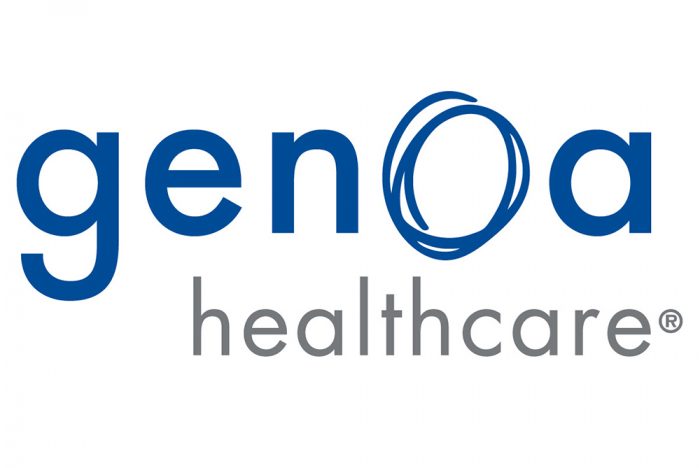Testing Hidden Post
PA Abuse/Neglect Registry Task Force
The Office of Developmental Programs (ODP) has taken the lead in creating a task force to develop recommendations for legislation supporting an Abuse and Neglect Registry in Pennsylvania. This group was formed due to the concern that care-dependent adults with disabilities and older adults are highly vulnerable to abuse and neglect. Carol Ferenz, IDD Division Director at RCPA, has been appointed as RCPA’s representative, along with representatives from ODP, OLTL, OMHSAS, DHS general council,
PDA, OCYF, Senate and House Human Services staff, Temple Institute on Protective Services, National Adult Protective Services, Autism Connection, Vision for Equality, Arc of PA, Disability Rights PA, Speaking for Ourselves, Self-Advocates United as 1, PA Association of County Administrators, PAR, and The Provider Alliance.
When abuse/neglect occurs, a substantial gap in preventing recurrence is that, even in serious cases of substantiated abuse/neglect in PA’s Adult Protective Services (APS) or Older Adult Protective Services (OAPS), unless there is a successful criminal prosecution, the responsible caregiver is not prevented from employment at another agency, obtaining guardianship of an individual, or volunteering in agencies supporting individuals with disabilities. In Pennsylvania, without a criminal conviction, there is no mechanism to identify or track caregivers who abuse or neglect the individuals they look after, because PA does not maintain a registry of caregivers who have abused or neglected individuals in their care.
The task force was charged with the following objectives:
- Outline desirable parameters for a registry (PS populations, types of caregivers, bar for inclusion);
- Analysis of challenges for implementation; and
- Provide recommendations for implementation of a Caregiver Abuse/Neglect Registry in PA.
The proposed timeframe for completion is October 2022.
It is recognized that there are several challenges that must be considered, such as the fact that there is no statutory authority for a registry and there must be a process to address appeal rights for caregivers. Additionally, current investigations for APS only substantiate that abuse/neglect occurred, but not responsible person(s) as well as the implications and interface between CPSL, APS, and OAPS.
This registry will require the development of an infrastructure, revision of investigatory processes, and IT changes to support collection of new investigatory information. There will be a need for policy, procedures, and IT to support assignment of — and database for — unique identifiers for all DSPs/DCWs; and of course, there will be a fiscal impact.
Several other states have implemented a similar registry, including New Jersey, Massachusetts, New York, Delaware, and Ohio. The group has reviewed information from those existing policies as well as current policies in PA with Children and Youth services.
Harm Reduction and Addiction Treatment: Not an Either/Or Proposition
Since as early as the 1960s, harm reductionists have operated mostly underground and in the shadows in the United States. Today, the harm reduction movement is squarely in the middle of the conversation about and visible on the front lines of the work being done to save the lives of those who use drugs. Harm reduction has positioned itself as arguably the most effective immediate solution to saving people from dying due to a drug overdose. And many, including at the highest levels of state and federal government, are taking notice.
Harm reduction, according to the National Harm Reduction Coalition, incorporates a spectrum of strategies that includes safer use of drugs, managed use, abstinence, meeting people who use drugs “where they’re at,” and addressing conditions of use along with the use itself.
Some of those strategies include syringe service programs (SSPs) and fentanyl test strips. And although opponents of harm reduction argue that such strategies enable drug use, according to the Centers for Disease Control and Prevention (CDC), new users of SSPs are five times more likely to enter drug treatment and three times more likely to stop using drugs than individuals who don’t use the programs. The CDC also reports that SSPs help serve as a bridge to other health services, including Hepatitis C and HIV testing and treatment, and vaccination [read full article].
In Pennsylvania, harm reduction strategies have received bipartisan support, albeit limited. Rep. Jim Struzzi (R) introduced HB 1393, which would legalize fentanyl test strips for personal use. Of the harm reduction bills in the legislature, Struzzi’s has advanced the farthest, having passed out of the full House of Representatives in June of this year. The bill currently sits in the Senate Judiciary Committee. A companion bill, SB 845, sponsored by Sen. Tim Kearney (D), has also been introduced.
Sen. Pat Browne (R) introduced SB 926, which would legalize SSPs in Pennsylvania. It was referred to the Senate Judiciary Committee and has yet to be called to a vote.
In Pennsylvania, more than 170 organizations have signed on as supporters of SSPs. RCPA, along with some of its largest addiction treatment provider members, is among those.
In addition to legislative support, harm reduction efforts are receiving funding support. Over the next 18 years, Pennsylvania will receive more than $1 billion from the negotiated settlement between opioid distributors and Johnson & Johnson and states’ attorneys general. The portion of settlement money the legislature controls has been allocated to DDAP, and it intends to use some of those funds for harm reduction initiatives.
Federally, President Biden’s 2022 National Drug Control Strategy calls for expansion of high-impact harm reduction interventions including naloxone, drug test strips, and SSPs. In New York City, two supervised consumption sites, where drug users bring their own drugs to use under the supervision of trained workers in case they overdose, opened last year in New York City. Rhode Island is planning to open at least one as soon as this year. Others, including in California, are in the planning stages.
Still, some of the most basic harm-reduction strategies, including low-barrier buprenorphine — increased access to buprenorphine through patient-centered programs that are easy to access, offer a high quality of care, and eliminate hurdles to access or stay in care — are not widely available in Pennsylvania. This is, in part, because of state and federal regulations, a lack of buprenorphine prescribers, and antiquated philosophies on addiction treatment held by some influential groups, including some in the legislature.
Despite the life-saving potential of harm reduction strategies, not to mention the bridge they often provide to addiction treatment, they remain stigmatized. For addiction treatment providers, the challenge is finding collaborative ways to work with harm reductionists while staying true to their own missions. Doing so ultimately will best serve the individual in need and save lives.
First-Of-Its-Kind Program Addresses Needs of Manufacturers, Those With Autism
How a Title IX Lawsuit Against Temple Changed the Game
Accessibility Statement
Compliance status
We firmly believe that the internet should be available and accessible to anyone and are committed to providing a website that is accessible to the broadest possible audience, regardless of ability.
To fulfill this, we aim to adhere as strictly as possible to the World Wide Web Consortium’s (W3C) Web Content Accessibility Guidelines 2.1 (WCAG 2.1) at the AA level. These guidelines explain how to make web content accessible to people with a wide array of disabilities. Complying with those guidelines helps us ensure that the website is accessible to blind people, people with motor impairments, visual impairment, cognitive disabilities, and more.
This website utilizes various technologies that are meant to make it as accessible as possible at all times. We utilize an accessibility interface that allows persons with specific disabilities to adjust the website’s UI (user interface) and design it to their personal needs.
Additionally, the website utilizes an AI-based application that runs in the background and optimizes its accessibility level constantly. This application remediates the website’s HTML, adapts its functionality and behavior for screen-readers used by blind users, and for keyboard functions used by individuals with motor impairments.
If you wish to contact the website’s owner please use the following email smilitello@paproviders.org
Screen-reader and keyboard navigation
Our website implements the ARIA attributes (Accessible Rich Internet Applications) technique, alongside various behavioral changes, to ensure blind users visiting with screen-readers can read, comprehend, and enjoy the website’s functions. As soon as a user with a screen-reader enters your site, they immediately receive a prompt to enter the Screen-Reader Profile so they can browse and operate your site effectively. Here’s how our website covers some of the most important screen-reader requirements:
- Screen-reader optimization: we run a process that learns the website’s components from top to bottom, to ensure ongoing compliance even when updating the website. In this process, we provide screen-readers with meaningful data using the ARIA set of attributes. For example, we provide accurate form labels; descriptions for actionable icons (social media icons, search icons, cart icons, etc.); validation guidance for form inputs; element roles such as buttons, menus, modal dialogues (popups), and others.Additionally, the background process scans all of the website’s images. It provides an accurate and meaningful image-object-recognition-based description as an ALT (alternate text) tag for images that are not described. It will also extract texts embedded within the image using an OCR (optical character recognition) technology. To turn on screen-reader adjustments at any time, users need only to press the Alt+1 keyboard combination. Screen-reader users also get automatic announcements to turn the Screen-reader mode on as soon as they enter the website.
These adjustments are compatible with popular screen readers such as JAWS, NVDA, VoiceOver, and TalkBack.
- Keyboard navigation optimization: The background process also adjusts the website’s HTML and adds various behaviors using JavaScript code to make the website operable by the keyboard. This includes the ability to navigate the website using the Tab and Shift+Tab keys, operate dropdowns with the arrow keys, close them with Esc, trigger buttons and links using the Enter key, navigate between radio and checkbox elements using the arrow keys, and fill them in with the Spacebar or Enter key.Additionally, keyboard users will find content-skip menus available at any time by clicking Alt+2, or as the first element of the site while navigating with the keyboard. The background process also handles triggered popups by moving the keyboard focus towards them as soon as they appear, not allowing the focus to drift outside.
Users can also use shortcuts such as “M” (menus), “H” (headings), “F” (forms), “B” (buttons), and “G” (graphics) to jump to specific elements.
Disability profiles supported on our website
- Epilepsy Safe Profile: this profile enables people with epilepsy to safely use the website by eliminating the risk of seizures resulting from flashing or blinking animations and risky color combinations.
- Vision Impaired Profile: this profile adjusts the website so that it is accessible to the majority of visual impairments such as Degrading Eyesight, Tunnel Vision, Cataract, Glaucoma, and others.
- Cognitive Disability Profile: this profile provides various assistive features to help users with cognitive disabilities such as Autism, Dyslexia, CVA, and others, to focus on the essential elements more easily.
- ADHD Friendly Profile: this profile significantly reduces distractions and noise to help people with ADHD, and Neurodevelopmental disorders browse, read, and focus on the essential elements more easily.
- Blind Users Profile (Screen-readers): this profile adjusts the website to be compatible with screen-readers such as JAWS, NVDA, VoiceOver, and TalkBack. A screen-reader is installed on the blind user’s computer, and this site is compatible with it.
- Keyboard Navigation Profile (Motor-Impaired): this profile enables motor-impaired persons to operate the website using the keyboard Tab, Shift+Tab, and the Enter keys. Users can also use shortcuts such as “M” (menus), “H” (headings), “F” (forms), “B” (buttons), and “G” (graphics) to jump to specific elements.
Additional UI, design, and readability adjustments
- Font adjustments – users can increase and decrease its size, change its family (type), adjust the spacing, alignment, line height, and more.
- Color adjustments – users can select various color contrast profiles such as light, dark, inverted, and monochrome. Additionally, users can swap color schemes of titles, texts, and backgrounds with over seven different coloring options.
- Animations – epileptic users can stop all running animations with the click of a button. Animations controlled by the interface include videos, GIFs, and CSS flashing transitions.
- Content highlighting – users can choose to emphasize essential elements such as links and titles. They can also choose to highlight focused or hovered elements only.
- Audio muting – users with hearing devices may experience headaches or other issues due to automatic audio playing. This option lets users mute the entire website instantly.
- Cognitive disorders – we utilize a search engine linked to Wikipedia and Wiktionary, allowing people with cognitive disorders to decipher meanings of phrases, initials, slang, and others.
- Additional functions – we allow users to change cursor color and size, use a printing mode, enable a virtual keyboard, and many other functions.
Assistive technology and browser compatibility
We aim to support as many browsers and assistive technologies as possible, so our users can choose the best fitting tools for them, with as few limitations as possible. Therefore, we have worked very hard to be able to support all major systems that comprise over 95% of the user market share, including Google Chrome, Mozilla Firefox, Apple Safari, Opera and Microsoft Edge, JAWS, and NVDA (screen readers), both for Windows and MAC users.
Notes, comments, and feedback
Despite our very best efforts to allow anybody to adjust the website to their needs, there may still be pages or sections that are not fully accessible, are in the process of becoming accessible, or are lacking an adequate technological solution to make them accessible. Still, we are continually improving our accessibility, adding, updating, improving its options and features, and developing and adopting new technologies. All this is meant to reach the optimal level of accessibility following technological advancements. If you wish to contact the website’s owner, please use the following email smilitello@paproviders.org
A New Approach to Support Overdose Survivors: Buprenorphine at the Point of Engagement
In the years Pennsylvania has been earnestly battling the opioid overdose death epidemic, many ideas have been suggested or implemented for intervening with overdose survivors. From hard line proposals (go to treatment following an overdose reversal or face criminal charges) to logistically complex processes (embed peers in emergency rooms to facilitate the transfer of overdose survivors to a treatment facility), these strategies have yielded mixed results as judged against one grim fact: exacerbated by Covid, 5,063 Pennsylvanians died of a drug overdose in 2020 (the latest year for which overdose death totals are confirmed). That total is second only to the record set in 2017, with 5,403.
One of the newest initiatives to intervene with overdose survivors is currently under way in Pittsburgh. By addressing many of the shortcomings of other intervention efforts, this strategy employs an evidence-based harm-reduction approach.
In Pittsburgh, Emergency Medical Services (EMS) is eliminating barriers to treatment and connecting patients to recovery resources through its prehospital buprenorphine program, a Pennsylvania Department of Health-approved pilot program that complies with all state and federal laws and regulations. Joshua Schneider, an emergency medical technician and overdose prevention coordinator for the City of Pittsburgh, recently testified before the Center for Rural Pennsylvania about the program, which allows paramedics to administer buprenorphine to a patient experiencing opioid withdrawal, whether part of an overdose reversal or not, and connect that patient directly to a telemedicine clinic. The patient then can receive a buprenorphine prescription, typically within 24 hours. This program circumvents traditional barriers, because it offers medication at the point of EMS engagement, does not require transport to an emergency department, and offers low-threshold access to ongoing treatment through a simple phone call. To date, this pilot program has improved post-overdose withdrawal symptoms for all enrolled patients and has resulted in multiple patients continuing treatment.
EMS providers respond to a high number of opioid overdose calls and are a key access point to the health care system for people who use drugs. A large number of patients who engage with EMS following an overdose decline transport to the hospital, creating an access gap that leaves patients without any care beyond resuscitation with naloxone. In 2021, more than 30 percent of Pittsburgh EMS patients declined transport to the hospital after experiencing an opioid overdose, approximately double the transport refusal rate for other call types. While an emergency department is not always the optimal place for a person who has overdosed to receive care, it can act as a resource hub where patients can be connected to substance use treatment and social services. Patients who decline transport to the hospital cannot be connected to those resources. The majority of EMS agencies lack the ability to connect patients to other forms of care and patients who are not transported to the emergency department are often left at the scene with nothing more than a box of naloxone or a resource pamphlet.
Even patients who accept transport to the emergency department struggle to get connected with substance use treatment. While all Allegheny County emergency departments have the ability to administer buprenorphine and make a referral to community providers, most patients who present to the emergency department do not receive buprenorphine or linkage to longitudinal care.
Effective treatment, including medication, for opioid use disorder (OUD) exists today beyond what has been traditionally viewed as rehabilitation. For those individuals willing to accept buprenorphine treatment as a potential pathway to recovery from OUD, Pittsburgh’s prehospital buprenorphine program offers great promise.
Retail Pharmacy Crisis Highlights Importance of Having a Trusted Pharmacy Partner
Frustrations mount as many retail pharmacies struggle to meet the needs of the providers they work with and the consumers they serve.
Fluctuating hours, long lines, and cancelled appointments are just some of the barriers consumers face, while providers encounter lapses in communication with vital partners in patient care.
A New York Times article recently detailed the retail pharmacy crisis driven by both staffing shortages and increased demand. Because many consumers are struggling to get the medications they need, providers have adjusted their prescribing methods – filling a 90-day supply for what used to be a 30-day supply, for example – to ensure their consumers can stay on track.
Amid this crisis, clinics who partner with Genoa Healthcare® are finding even more benefit in having a reliable on-site pharmacy team. When a local pharmacy chain closed their doors in Oregon, nearby retail chains became flooded with prescriptions to fill in the community. People trying to get their medications were met with long wait times and miscommunication from pharmacy teams they had never met.
Understanding the challenges in her community, Genoa Pharmacist Shuga Knopp reminded her partners at the clinic that her team could fill all the medications consumers and staff needed.
“I wanted them to know that they wouldn’t have trouble getting their medications from my team at Genoa,” Knopp said. “We’re consistent and we care.”
Knopp and her team continue to develop personal relationships with their consumers, ensuring they can provide the best support for their medication needs.
“People were more frustrated with their pharmacies than they had ever been, and their pain points felt preventable,” Knopp said. “They’re just so happy that they can count on us, and that we actually answer the phone when they call.”
As demand for behavioral health care continues to increase, Genoa pharmacy teams also lighten the burden for their partners’ staff by assisting with prior authorizations, taking on medication-related challenges, and being a resource for consumers in between their appointments. These services result in a more integrated care team and better outcomes for consumers.
Do you have questions or challenges pertaining to the current retail pharmacy crisis? Contact me.
Demonstrating the Value of Medicaid MLTSS Programs
Almost half of the states are operating Medicaid managed long-term services and supports (MLTSS) programs, but there has historically been limited evidence of their value. To help fill this gap, this report presents updated results from states responding to ADvancing States’ survey, as well as new research on states with MLTSS programs. The 12 states responding to the surveys — Arizona, Florida, Iowa, Kansas, Massachusetts, Minnesota, New Jersey, New Mexico, Tennessee, Texas, Virginia, and Wisconsin — account for more than half of the states who are operating MLTSS programs. States were asked about their goals in implementing MLTSS programs, what progress they had made in attaining those goals, and if they faced any challenges collecting data to document progress. In addition, new research has documented additional value from MLTSS programs in the following areas:
- Rebalancing Medicaid LTSS Spending. Rebalancing Medicaid long-term services and supports spending toward home- and community-based settings and providing more options for people to live in and receive services in the community was a key goal for all states. Many states have specific rebalancing targets, as well as financial incentives for MLTSS plans to meet them.
- Improving Member Experience, Quality of Life, and Health Outcomes. All states wanted to improve consumer health and satisfaction/quality of life. While it can be challenging to attribute improvements in health outcomes solely to MLTSS programs, seven states reported improved consumer health. Eleven states said that they collect data on the quality of life; from those reporting outcomes, MLTSS consumers had improved quality of life and high levels of satisfaction compared to fee-for-service programs. One challenge highlighted by states was that the fielding the surveys used to collect these data is time and labor-intensive.
- Reducing Waiver Waiting Lists and Increasing Access to Services. MLTSS programs may reduce or eliminate waiting lists for waiver services. Seven states said they wanted to reduce waiting lists, while others focused on increasing access to services. Some states successfully eliminated waiting lists, while other states addressed waiting lists through prioritizing applicants by level of need. Some states reinvested savings achieved through implementing MLTSS to decrease the number of people on waiting lists.
- Increasing Budget Predictability and Managing Costs. MLTSS programs’ use of capitated payments can help improve budget predictability. The programs also have the potential to achieve savings by: rebalancing LTSS spending, managing service use, and avoiding unnecessary hospitalizations or institutional placements. While states report they are “bending the cost curve,” inadequate data are a barrier to states’ ability to demonstrate these outcomes. The state surveys and recent research provide compelling examples demonstrating that states are meeting their MLTSS program goals. It also underscores the importance of expanding the scope and amount of data collected on program impacts. Health plan contracts with strong data reporting and performance monitoring requirements are important tools for states to build stakeholder support and demonstrate program viability over time.













